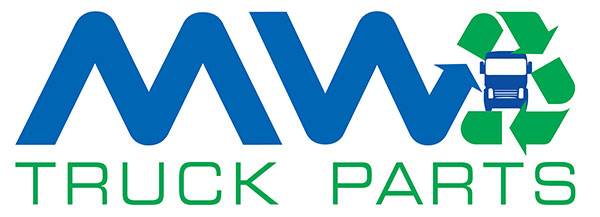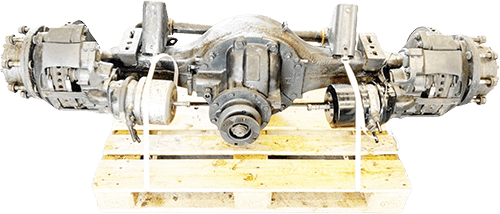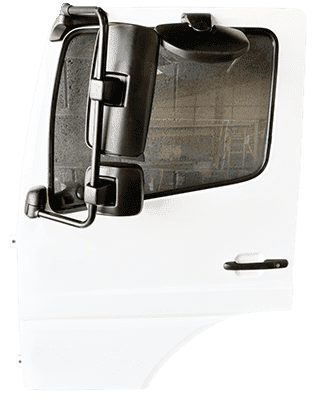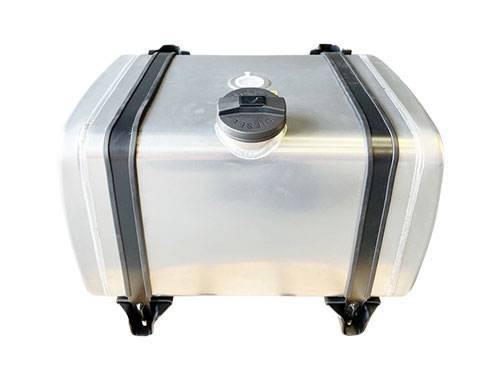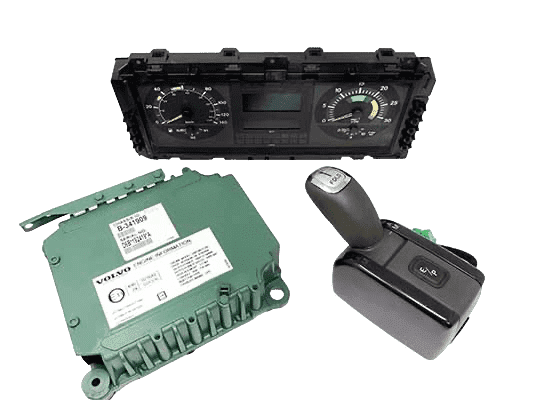Hydraulic tanks store and cool hydraulic fluid, ensuring smooth operation of various hydraulic functions.
Join us below to discover the ins and outs of truck hydraulic tanks.
Mounting options
Hydraulic tanks come in two main mounting configurations:
- Side-mounted tanks: These attach to your truck’s chassis rails, typically between the cab and rear axle. They are a popular choice due to their accessibility and space-efficient design.
- Rear-mounted tanks: Installed behind the cab, these tanks are ideal when side space is limited or when a larger capacity is needed. For instance, tipping applications usually call for rear-mounted tanks.
Capacity and dimensions
Tank capacity is measured in litres, with common sizes ranging from 45 to 230 litres.
The right size for your truck depends on your hydraulic system’s requirements and available space. Smaller tanks (45-80 litres) suit basic hydraulic systems or space-constrained installations, while larger tanks (150-230 litres) are necessary for high-demand applications like walking floors or multiple hydraulic functions.
Related: What is a hydraulic wet kit?
Tank dimensions vary based on capacity and design, with slimline tanks offering a more compact profile that is ideal for tight spaces.
Always check the tank’s dimensions against your available mounting area – for example, the tank’s depth may exceed any slot between the cab and trailer.
Materials and construction
Aluminium is the most common material for hydraulic tanks due to its lightweight properties and corrosion resistance.
Steel tanks are also available, offering durability at a lower cost but with added weight and less longevity due to corrosion potential.
Related: How hydraulic wet kits work on trucks
Some tanks feature additional components like built-in strainers, fluid level checking indicators, and temperature gauges, although they aren’t necessary for basic applications.
Single-line vs twin-line systems
Hydraulic tanks are designed to work with either single-line or twin-line hydraulic systems, which call for different levels of hydraulic fluids:
Single-line systems use one hydraulic line for pressure and return flow – they’re simpler but less efficient for less intensive applications.
Twin-line systems have separate pressure and return lines, offering better performance and cooling (most trucks use these).
Related: A guide to truck hydraulics fitting and adapters
Additional features
Some truck hydraulic tanks have OEM features that simplify refilling and managing hydraulic fluid. A quick rundown:
- Filler breathers: These allow for easy fluid top-ups while filtering incoming air to prevent contamination.
- Suction and return ports: Properly sized ports ensure efficient fluid flow to and from the hydraulic pump.
- Baffles: Internal baffles help reduce fluid sloshing and aeration, improving system performance (most tanks have these).
How it all connects up
When you enable the PTO, your hydraulic tank will feed your wet kit through hoses. A pressurised flow will initiate, sending the fluid through the hoses to the components that need it (the lifting mechanisms in your wet kit).
Need help choosing the right hydraulic tank? Contact us.






